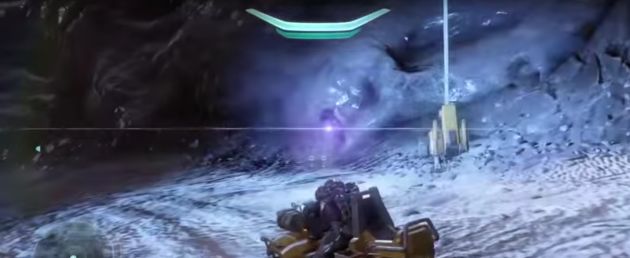Inimicus Ex Nihilo
November 15, 2016 Leave a comment
Or how to deteriorate the substance of the antagonist. The phenomenon of enemies appearing out of nowhere in locations and quantities determined by the creator of the scenario has become commonplace, especially in game design. While opponents undoubtedly have to spawn, the way they appear is crucial to the way they are experienced by the player and reader. Making them spawn in seemingly random places and undetermined numbers in plain view is reminiscent of the deus ex machina, the god from the machine. It is extra-diegetic because it slaps us in the face with the fact that there is a power that is external to the narrative it coordinates. Call it scripted events. Whereas careful writing and game design omit this clumsy mechanic and let the enemy emerge from the flow of events, more and more writers appear to make use of it, possibly owing to a lack of imagination.
The Bad Guys

Enemies spawning out of a portal in Halo 5: Guardians as seen in GhostRobo’s playthrough video on Youtube.
The problem with this sort of enemy insertion is not only a narrative one as explained above but one that also tears at the logic of combat. If the enemy can truly appear out of nowhere, what exactly prevents them from spawning en masse right on top of me and wiping me out on the spot? The answer is simple: absolutely nothing. Therefore, the enemy is either stupid for not doing so or he is spawning in the scripted locations for gameplay reasons. Those, however, should remain in the background as much as possible and not be rubbed under our noses as is often the case. The Halo-series has certainly developed this way. While in the original game Halo: Combat Evolved developed by Bungie and its several sequels the enemy was usually already in place or was delivered by dropship, implying an enemy combat infrastructure, the entries made by 343 Industries gave themselves over to the habit of popping enemies onto the battlefield from nowhere. Halo 4 and Halo 5: Guardians are guilty as charged. Especially the final engagement in the latter game largely consists of enemies spawning in waves into a room that has to be defended by the player. Why they don’t spawn all at once at maximum strength right on top of the defenders remains a mystery.
Another series that went down this path is Dragon Age. BioWare started with Dragon Age: Origins, a game where enemies were in place most of the time. Their ongoing presence provided the player with a sense of persistent threat. It also created a sense of accomplishment when that threat was defeated. The player was often tasked with assessing the situation before charging into combat. In the painfully rushed sequel Dragon Age 2, a vast amount of engagements with the enemy consisted of hostiles spawning from all possible directions. It became a grind against incalculable odds, and a sense of laziness in the design persistently nagged at the experience. In Dragon Age: Inquisition, the latest game in the series, the player had to regularly close rifts which, as you guessed, spawned new enemies once the present ones were defeated. This is another example where the player is defended by unexplained mechanics. For should the enemy appear at full strength at every rift, the game would certainly be unplayable. The result is an erosion of both the trust in the enemy’s capabilities and in the sense of accomplishment once he has been overcome.
How to do it
There is nothing wrong with the occasional ambush. However, the ambush should not be the core mechanic. An enemy that has tangible limitations, both in regards to numbers and infrastructure, that arise from believable diegetic exposition is more interesting to the problem-solving party. Faceless hordes we knew nothing about the moment before they appeared constitute quite the opposite. Presence gives the enemy identity and intent. This is who they are and that’s why they’re here. From there on, the player has to decide for himself how to be tackle the issue at hand. Sneak past, run past, or engage and neutralize? Examples where this is continuously executed well are stealth-based games and strategy games. The Deus Ex-series has always presented the player with present problem to solve.
A good example of how this can be achieved in literature is Andy Weirs The Martian. Albeit lacking a sentient antagonist, the protagonist’s main enemy is the hostile environment of Mars. The constant threat and known problems the stranded astronaut Mark Watney faces are what make this novel so captivating. It is because the dangers are quantifiable most of the time, while surprises are employed sparingly yet effectively to show the limitations of protagonist who cannot know everything, either. By telling us what’s going on, Andy Weir keeps us fascinated and playing along. Naturally, the amount of planning and research that go into the development of such a story are immense and constitute the diametrical opposite of inimicus ex nihilo.

You must be logged in to post a comment.